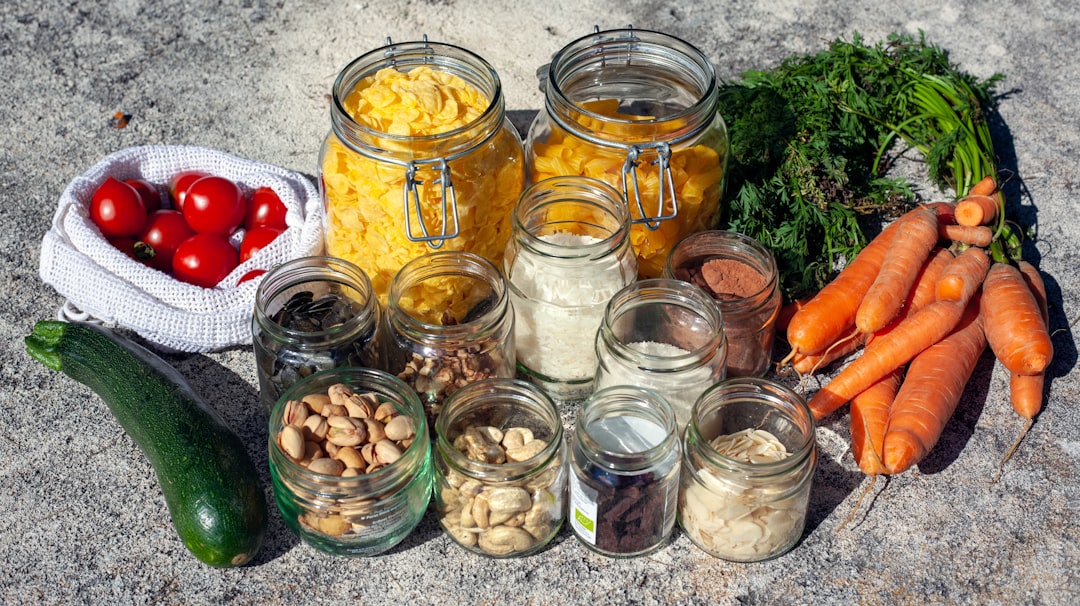Meal preparation has emerged as a pivotal strategy for individuals seeking to lose weight effectively and sustainably. The act of planning and preparing meals in advance not only streamlines the cooking process but also significantly reduces the likelihood of impulsive eating. When meals are prepped, individuals are less likely to reach for unhealthy snacks or fast food options, which often derail weight loss efforts.
This proactive approach allows for better control over calorie intake and nutritional quality, making it easier to adhere to dietary goals. Moreover, meal prep fosters a deeper understanding of portion sizes and nutritional content. By measuring ingredients and planning meals ahead of time, individuals can become more aware of what they are consuming.
This awareness is crucial for weight loss, as it encourages mindful eating practices. Research has shown that people who engage in meal prep tend to make healthier food choices, leading to a more balanced diet that supports their weight loss objectives. The psychological benefits of meal prep also cannot be overlooked; having healthy meals readily available can alleviate stress and anxiety related to food choices, making the weight loss journey more manageable.
Key Takeaways
- Meal prep is important for weight loss as it helps control portion sizes and prevents impulsive eating.
- Planning and preparing meals in advance saves time and reduces the temptation to opt for unhealthy options.
- Choosing the right ingredients, such as lean proteins and whole grains, is crucial for a balanced and nutritious meal prep.
- Portion control and meal timing are key factors in weight loss, as they help regulate calorie intake and metabolism.
- Incorporating variety and balance in meal prep ensures a diverse and enjoyable eating experience while meeting nutritional needs.
Planning and Preparing Your Meals
Effective meal planning begins with setting clear goals. Whether the aim is to lose weight, maintain a healthy lifestyle, or simply save time during the week, defining these objectives is essential. A well-structured meal plan typically spans a week and includes breakfast, lunch, dinner, and snacks.
Utilizing tools such as meal planning apps or traditional planners can help individuals visualize their meals and ensure they are meeting their nutritional needs. It is also beneficial to consider personal preferences and dietary restrictions when crafting a meal plan, as this increases the likelihood of adherence. Once the planning phase is complete, the actual preparation can commence.
This often involves batch cooking, where larger quantities of food are prepared at once and then divided into individual portions. Techniques such as roasting vegetables, grilling proteins, or cooking grains in bulk can save time and effort during the week. Additionally, incorporating a variety of cooking methods can enhance flavors and textures, making meals more enjoyable.
For instance, one might prepare a large pot of quinoa that can be used in salads, bowls, or as a side dish throughout the week. By organizing the cooking process efficiently, individuals can maximize their time in the kitchen while ensuring they have nutritious meals ready to go.
Choosing the Right Ingredients

Selecting the right ingredients is fundamental to successful meal prep and weight loss. Whole foods should be prioritized over processed options, as they are typically lower in calories and higher in essential nutrients. Fresh fruits and vegetables should form the cornerstone of any meal prep plan; they provide vital vitamins, minerals, and fiber that support overall health and satiety.
For instance, leafy greens like spinach or kale can be used in salads or smoothies, while colorful vegetables such as bell peppers and carrots add both nutrition and visual appeal to meals. In addition to fruits and vegetables, lean proteins play a crucial role in meal prep for weight loss. Options such as chicken breast, turkey, fish, legumes, and tofu are excellent choices that help maintain muscle mass while promoting fat loss.
Healthy fats should not be overlooked either; incorporating sources like avocados, nuts, seeds, and olive oil can enhance flavor and provide essential fatty acids that support metabolic health. Whole grains such as brown rice, quinoa, or whole wheat pasta can serve as satisfying bases for meals while providing sustained energy throughout the day. By focusing on nutrient-dense ingredients, individuals can create meals that are not only delicious but also conducive to their weight loss goals.
Portion Control and Meal Timing
| Metrics | Portion Control | Meal Timing |
|---|---|---|
| Weight Loss | Effective in reducing calorie intake | May help regulate metabolism |
| Blood Sugar Levels | Can help stabilize blood sugar | Timing meals can impact blood sugar levels |
| Digestive Health | May prevent overeating and aid digestion | Proper timing can aid digestion |
Portion control is a critical aspect of meal prep that directly impacts weight loss success. Understanding appropriate serving sizes helps prevent overeating and ensures that calorie intake aligns with individual goals. Utilizing measuring cups or a food scale can aid in accurately portioning meals during the prep process.
For example, when preparing a stir-fry, one might measure out a specific amount of protein and vegetables to create balanced portions that fit within their daily caloric limits. Meal timing also plays a significant role in weight management. Research suggests that eating smaller, more frequent meals throughout the day can help regulate hunger hormones and stabilize blood sugar levels.
This approach can prevent extreme hunger that often leads to overeating at mealtimes. When planning meals, individuals should consider their daily schedules and energy needs; for instance, those who engage in regular exercise may benefit from consuming a protein-rich snack post-workout to aid recovery. By aligning meal timing with personal routines and hunger cues, individuals can optimize their weight loss efforts while maintaining energy levels throughout the day.
Incorporating Variety and Balance
Incorporating variety into meal prep is essential for preventing monotony and ensuring a well-rounded diet. Eating the same meals repeatedly can lead to boredom and may increase the temptation to stray from healthy eating habits. To combat this, individuals should aim to include a diverse array of ingredients and flavors in their meal plans.
For example, rotating between different protein sources—such as chicken one week and lentils the next—can keep meals interesting while still meeting nutritional needs. Balance is equally important when it comes to meal prep. A well-balanced plate typically includes a source of protein, healthy fats, carbohydrates, and plenty of vegetables.
This combination not only supports satiety but also provides a range of nutrients necessary for optimal health. For instance, a balanced lunch might consist of grilled salmon (protein), quinoa (carbohydrate), steamed broccoli (vegetable), and a drizzle of olive oil (healthy fat). By focusing on variety and balance in meal prep, individuals can create satisfying meals that nourish both body and mind while supporting their weight loss journey.
Proper Storage and Labeling

Proper storage techniques are vital for maintaining the freshness and safety of prepped meals. Utilizing airtight containers can help preserve the quality of food while preventing spoilage. Glass containers are often preferred due to their durability and ability to withstand temperature changes without leaching harmful chemicals into food.
Additionally, portioning meals into individual servings not only makes it easier to grab-and-go but also helps with portion control. Labeling containers with dates and contents is another crucial step in meal prep. This practice ensures that individuals are aware of how long food has been stored and helps prevent waste due to spoilage.
For example, labeling a container with “Chicken Stir-Fry – Eat by 10/15” provides clear guidance on when the meal should be consumed for optimal freshness. Furthermore, organizing the refrigerator or freezer by placing older items at the front encourages consumption before they expire. By implementing proper storage and labeling practices, individuals can extend the shelf life of their meals while minimizing food waste.
Tips for Staying Motivated
Staying motivated throughout the meal prep process can be challenging but is essential for long-term success in weight loss endeavors. One effective strategy is to set specific goals related to meal prep—such as trying out new recipes each week or committing to prepping meals every Sunday. These goals provide a sense of purpose and accomplishment that can drive continued engagement with meal preparation.
Another way to maintain motivation is by involving others in the process. Cooking with friends or family members can make meal prep more enjoyable and foster accountability. Additionally, sharing successes on social media or within support groups can provide encouragement from others who are on similar journeys.
Celebrating small victories—like successfully sticking to a meal plan for an entire week—can also boost morale and reinforce positive habits. By finding ways to stay engaged and connected with others during meal prep, individuals can cultivate a supportive environment that enhances motivation.
Making Meal Prep a Sustainable Habit
Transforming meal prep from an occasional activity into a sustainable habit requires consistency and adaptability. Establishing a regular schedule for meal planning and preparation—such as dedicating Sunday afternoons to cooking—can help solidify this practice into daily life. Over time, this routine becomes second nature, making it easier to maintain healthy eating habits even amidst busy schedules.
Flexibility is also key in making meal prep sustainable. Life can be unpredictable; therefore, being open to adjusting plans based on changing circumstances is important. If unexpected events arise that disrupt the usual cooking schedule, having backup options—such as frozen meals or quick recipes—can help individuals stay on track without feeling overwhelmed.
Emphasizing progress over perfection allows for a more forgiving approach to meal prep; even if some weeks are less organized than others, the overall commitment to healthy eating remains intact. By fostering consistency while allowing for flexibility, individuals can create a sustainable meal prep routine that supports their weight loss goals over the long term.
FAQs
What is meal prep?
Meal prep is the process of planning, preparing, and packaging meals in advance, typically for the week ahead. This can include cooking and portioning out meals, as well as chopping and organizing ingredients to make mealtime easier and more convenient.
How can meal prep help with weight loss?
Meal prep can help with weight loss by allowing individuals to have healthy, portion-controlled meals readily available. By planning and preparing meals in advance, it can help prevent impulsive, unhealthy food choices and overeating. It also helps to ensure that nutritious, balanced meals are easily accessible, making it easier to stick to a healthy eating plan.
What are some meal prep tips for weight loss?
Some meal prep tips for weight loss include planning out meals and snacks for the week, choosing recipes that are high in protein and fiber, portioning out meals into individual containers, and incorporating a variety of fruits and vegetables. It’s also important to have the right storage containers and to schedule a specific time for meal prep each week.
What are some examples of meals that are good for meal prep for weight loss?
Examples of meals that are good for meal prep for weight loss include grilled chicken with roasted vegetables, quinoa and black bean salad, turkey and vegetable stir-fry, and overnight oats with fruit and nuts. These meals are high in protein, fiber, and nutrients, and can be easily portioned out and stored for the week.
How long can meal prepped meals be stored?
Meal prepped meals can typically be stored in the refrigerator for 3-4 days. It’s important to make sure that the meals are properly sealed in airtight containers to maintain freshness and prevent spoilage. Some meals can also be frozen for longer storage, but it’s important to follow specific freezing and thawing guidelines for each type of meal.
